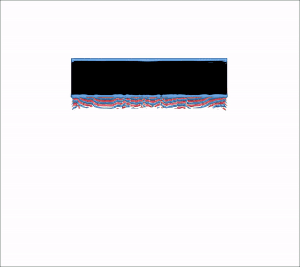Motivation
- Wide range of application for commute and cargo, UAVs, UAMs, e/VTOL (rotary-wing, fixed-wing)
- Low speed operation, small aspect ratio, low Reynolds number 𝑅𝑒: 𝑂(104 −105)Re: O(104 -105)
- Operate in urban environment
- Subjected to large wind gusts encounters
Research question
Is the classical unsteady theory “small gust perturbations” applicable for large gust encounters?
Objective
To investigate the response of a flat plate during large transverse gust encounters.

Canonical gust shapes
- Reynolds numbers, 𝑂(104)O(10^4) Re = 20k, 40k in free atmosphere
- A transverse gust with various shapes:
- Sine-squared
- Top-hat
- Step


Gust characterization
- Flat plates at 0 degrees angle of incidence
- Three canonical gust shapes: Sine-squared; top-hat; step
- Gust widths, ranging from 0.25c to 9c width
- Various gust amplitudes, 𝑮𝑹=𝑽𝑼=0.25 −1.2 GR=V/U=0.25 -1.2
Gust Modeling - Split Velocity Method (SVM)
- Gust velocity is prescribed to the grid time metrics using analytical function
- Source terms were derived to capture the effect of the airfoil on the gust
- SVM previously been used to model airfoil–vortex interaction and gust responses
- No numerical dissipation by larger cells, coarser mesh can be used away from the surfaces, reducing the computational cost

Validation
- W= 2c; GR=1; Re= 40k
- Cambridge University Engineering, Ref. Corkery et. al, 2018, Department (CUED)
- Dye trace for visualization


Some outcomes
- Flat-plate; 𝛼𝑔=0α_g=0; 𝑅𝑒 = 40𝑘 Re = 40k ; free atmosphere










Methodology to model large gust encounters and unsteady kinematics
- Physics based computational tool to model unsteadiness: i) kinematics ii) flow disturbances
- RANS-based with (𝛾−𝑅𝑒𝜃)(γ-Re_θ) computations in a good agreement with RANS/LES (IDDES)
- Efficient computational method using Split Velocity Method (SVM) for large gust response
- The classical unsteady theory does not account for unsteadiness that arises from massive flow separation, a nonplanar wake, and three-dimensional effects.


Read more about the methodology and results in the following publications and proceedings:
- Badrya, C., Baeder J. D., and Jones, A. R., Application of Prescribed Velocity Methods to a Large-Amplitude Flat-Plate Gust Encounters, AIAA Journal Vol. 57, No. 8(2019), DOI: 10.2514/1.J057978
- Biler, H., Badrya, C., and Jones, A. R., Experimental and Computational Investigation of Transverse Gust Encounters, AIAA Journal Vol. 57, No. 11, 2019. DOI: 10.2514/1.J057646
- Badrya, C., Biler., H., Jones, A. R., and Baeder J. D., Effect of Gust Width on Flat-Plate Response in Large Transverse Gust, AIAA Journal, December 2020. DOI:10.2514/1.J059678
- Badrya, C., Jones, A. R., and Baeder, J. D., Unsteady Aerodynamic Response of a Flat-Plate Encountering Large-Amplitude Sharp-Edged Gust, AIAA Journal. DOI: 10.2514/1.J060683
